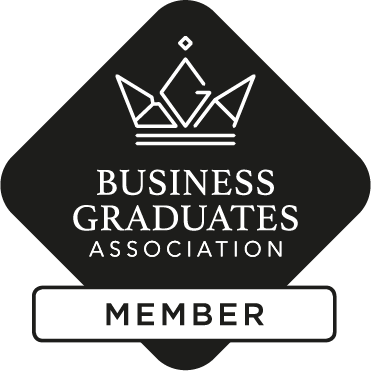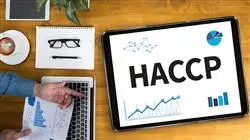University certificate
Accreditation/Membership

The world's largest faculty of journalism and communication”
Introduction to the Program
Learn how to generate effective digital communication for companies and position yourself as an expert in the sector"

Digital communication and crisis management is a fundamental area in any business and, for this reason, companies are increasingly contributing more resources to its development. Understanding it requires the interdisciplinary study of basic concepts of Communication Sciences as a starting point for the development of all the skills required to work in this area. Therefore, this Masters Degree will explore the concepts that affect the psychology of communication, an area of compulsory knowledge for any communicative approach in the professional field.
Likewise, one of the primary objectives of the program is the understanding and knowledge of the use of digital resources applied to communication: from the search for information to its dissemination. Corporate identity and its creation will also be developed in the Masters Degree with a global vision of the requirements that companies may need.
Specifically, it is a comprehensive and fully analytical tour that will lead students to know the ways of creating public opinion, its flows, forms of movement and, above all, its link with power and its capacity for historical influence. In this context, knowledge of the functioning of the media in the local and global context will be one of the most current topics of the program.
In addition, it must be taken into account that nowadays the Internet is the most powerful communication channel that exists, since it offers companies and users new ways of communication, sales, participation and knowledge exchange.
For this reason, the program will include rigorous Masterclasses given by a prestigious International Guest Director that will provide graduates with advanced skills to experience a significant leap in quality in their careers as Communication Directors.
A renowned International Guest Director will offer disruptive Masteclasses that will delve into the most innovative strategies in the field of Communication and Digital Reputation Management"
This MBA in Communication and Digital Reputation Management contains the most complete and up-to-date program on the market. The most important features include:
- The use of the latest technology in e-learning software
- The intensely visual teaching system, supported by graphic and schematic contents that are easy to assimilate and understand
- Practical case studies presented by practising experts
- State-of-the-art interactive video systems
- Teaching supported by telepractice
- Continuous updating and recycling systems
- Self-regulated learning, which makes the program completely compatible with other commitments
- Practical exercises for self-assessment and learning verification
- Support groups and educational synergies: questions to the expert, debate and knowledge forums
- Communication with the teacher and individual reflection work.
- Content that is accessible from any fixed or portable device with an Internet connection
- Complementary resource banks that are permanently available
This program will open doors to new avenues for your professional advancement"
The teaching staff of this program is made up of professionals from different fields related to this specialty. In this way, TECH is able to offer students the most effective way to update their knowledge, which is one of the primary objectives of the program. A multidisciplinary team of experienced professionals in different environments who will develop theoretical knowledge efficiently, but above all, will put their practical knowledge derived from their own experience at the students’ service.
This mastery of the subject matter is complemented by the effectiveness of the methodological design. Developed by a multidisciplinary team of e-learning experts, it integrates the latest advances in educational technology. As a result, students will be able to study with a range of comfortable and versatile multimedia tools that will give them the operational capacity they need in their study process.
The design of this program focuses on Problem-Based Learning. An approach that conceives learning as a highly practical process. To achieve this remotely, telepractice will be used. Therefore, with the help of an innovative interactive video system, and Learning from an Expert, the student will be able to acquire the knowledge as if they were facing the very cases being studied. A concept that will allow students to integrate and memorize what they have learn in a more realistic and permanent way.
A Masters Degree that will enable you to work in all areas of digital communication and crisis management, with the credibility of a high-level professional"

A unique opportunity to study while continuing to work, thanks to its 100% online format"
Why study at TECH?
TECH is the world’s largest online university. With an impressive catalog of more than 14,000 university programs available in 11 languages, it is positioned as a leader in employability, with a 99% job placement rate. In addition, it relies on an enormous faculty of more than 6,000 professors of the highest international renown.

Study at the world's largest online university and guarantee your professional success. The future starts at TECH”
The world’s best online university according to FORBES
The prestigious Forbes magazine, specialized in business and finance, has highlighted TECH as “the world's best online university” This is what they have recently stated in an article in their digital edition in which they echo the success story of this institution, “thanks to the academic offer it provides, the selection of its teaching staff, and an innovative learning method aimed at educating the professionals of the future”
A revolutionary study method, a cutting-edge faculty and a practical focus: the key to TECH's success.
The most complete study plans on the university scene
TECH offers the most complete study plans on the university scene, with syllabuses that cover fundamental concepts and, at the same time, the main scientific advances in their specific scientific areas. In addition, these programs are continuously being updated to guarantee students the academic vanguard and the most in-demand professional skills. In this way, the university's qualifications provide its graduates with a significant advantage to propel their careers to success.
TECH offers the most comprehensive and intensive study plans on the current university scene.
A world-class teaching staff
TECH's teaching staff is made up of more than 6,000 professors with the highest international recognition. Professors, researchers and top executives of multinational companies, including Isaiah Covington, performance coach of the Boston Celtics; Magda Romanska, principal investigator at Harvard MetaLAB; Ignacio Wistumba, chairman of the department of translational molecular pathology at MD Anderson Cancer Center; and D.W. Pine, creative director of TIME magazine, among others.
Internationally renowned experts, specialized in different branches of Health, Technology, Communication and Business, form part of the TECH faculty.
A unique learning method
TECH is the first university to use Relearning in all its programs. It is the best online learning methodology, accredited with international teaching quality certifications, provided by prestigious educational agencies. In addition, this disruptive educational model is complemented with the “Case Method”, thereby setting up a unique online teaching strategy. Innovative teaching resources are also implemented, including detailed videos, infographics and interactive summaries.
TECH combines Relearning and the Case Method in all its university programs to guarantee excellent theoretical and practical learning, studying whenever and wherever you want.
The world's largest online university
TECH is the world’s largest online university. We are the largest educational institution, with the best and widest online educational catalog, one hundred percent online and covering the vast majority of areas of knowledge. We offer a large selection of our own degrees and accredited online undergraduate and postgraduate degrees. In total, more than 14,000 university degrees, in eleven different languages, make us the largest educational largest in the world.
TECH has the world's most extensive catalog of academic and official programs, available in more than 11 languages.
Google Premier Partner
The American technology giant has awarded TECH the Google Google Premier Partner badge. This award, which is only available to 3% of the world's companies, highlights the efficient, flexible and tailored experience that this university provides to students. The recognition as a Google Premier Partner not only accredits the maximum rigor, performance and investment in TECH's digital infrastructures, but also places this university as one of the world's leading technology companies.
Google has positioned TECH in the top 3% of the world's most important technology companies by awarding it its Google Premier Partner badge.
The official online university of the NBA
TECH is the official online university of the NBA. Thanks to our agreement with the biggest league in basketball, we offer our students exclusive university programs, as well as a wide variety of educational resources focused on the business of the league and other areas of the sports industry. Each program is made up of a uniquely designed syllabus and features exceptional guest hosts: professionals with a distinguished sports background who will offer their expertise on the most relevant topics.
TECH has been selected by the NBA, the world's top basketball league, as its official online university.
The top-rated university by its students
Students have positioned TECH as the world's top-rated university on the main review websites, with a highest rating of 4.9 out of 5, obtained from more than 1,000 reviews. These results consolidate TECH as the benchmark university institution at an international level, reflecting the excellence and positive impact of its educational model.” reflecting the excellence and positive impact of its educational model.”
TECH is the world’s top-rated university by its students.
Leaders in employability
TECH has managed to become the leading university in employability. 99% of its students obtain jobs in the academic field they have studied, within one year of completing any of the university's programs. A similar number achieve immediate career enhancement. All this thanks to a study methodology that bases its effectiveness on the acquisition of practical skills, which are absolutely necessary for professional development.
99% of TECH graduates find a job within a year of completing their studies.
Master’s Degree MBA in Communication and Digital Reputation Management
TECH Global University, the world's largest online university, with worldwide presence, offers a Master’s Degree MBA in Communication and Digital Reputation Management. Its main objective is the understanding and knowledge of digital resources to apply them to organizational communication and business advertising. In other words, our School of Journalism and Communication qualifies its students to manage communication networks, design the corporate identity of an entity and identify and solve public relations crises.
The most up-to-date syllabus in Digital Communication
This TECH's Master’s Degree MBA in Communication and Digital Reputation Management is structured through teaching units that makes learning compatible with the personal and professional life of the communicator. It also incorporates the study of the latest advances in relation to the digital era, applied to the company. For example, our students will perfectly understand concepts such as 360º communication, online advertising techniques, digital marketing, social network management, big data, company reputation, the phenomenon of public opinion, media influence, communication media or formats, digital media research and persuasion strategies, among many others.







